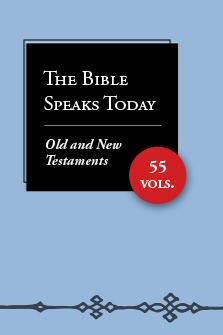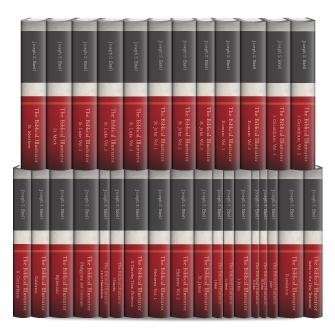Preaching God’s Word to God’s people is a serious task—one that requires preparation and prayer. But knowing how to write a sermon takes practice. We’d be hard-pressed to say all there is to say about effective preaching, but the practices and tips below will help you begin to find the sermon preparation rhythm that works best for you.
Keep reading to learn all about how to write a sermon—or skip to the topics that interest you most. Then take a look at resources to help in your sermon preparation:
- Choose your sermon topic
- Prepare your heart to preach
- Examine the topic deeply for yourself
- Review original languages
- Read commentaries
- Build your outline
- Write with your audience in mind
- Speak so your listeners learn
- Share your sermon
1. Choose your sermon topic
Before we dive into how to write a sermon, let’s consider the two main types of sermons: topical and expositional.
Topical sermons explore a biblical word or concept, like missions, giving, or prayer. Learn how to build your topical sermon from start to finish in Logos.
Expositional sermons walk through biblical passages in detail, often verse by verse. They are usually part of a series on a portion of Scripture preached sequentially, such as a book or a literary unit like the Sermon on the Mount.
Learn how to build your expositional sermon from start to finish in Logos.
Tips for choosing a sermon topic or passage:
- Pray to see if the Lord puts something specific on your heart.
- Scan your Bible for passages or stories that stick out to you.
- Reflect on what may be most relevant or needed for your hearers right now.
- Peruse sermon resources like the Logos Sermon Starter Guide. You can search by passage, theme, biblical person, and more, and get instant high-level overviews on each topic.
- The Gospel Coalition: What Should I Preach Next?
- Christianity Today: A Step-by-Step Guide to Writing Your Sermon
- Influence Magazine: How to Plan a Sermon Series
- Paul Chappell: 5 Ways to Make Sermon Study More Productive
Sermon Workflows in Logos
There’s a feature built into Logos that takes you through the entire expository sermon writing process, from prayer to exegesis to preaching. It’s called Workflows.
2. Prepare your heart to preach
The most important part of sermon preparation doesn’t happen behind a desk or a computer. It happens on your knees. Prayer is the true power behind the pulpit.
Additionally, there are important life disciplines that are important for preachers:
- Logos Blog: Sermon Preparation Is 20 Hours of Prayer
- The Gospel Coalition: Help for Pastoral Prayer during Sermon Prep
- Church Leaders: 12 Reasons to Pray More as You Prepare Your Sermon for This Weekend
3. Examine the topic for yourself
Before you can preach a passage or a topic, you need to know it for yourself. This takes concerted time in the text. An effective, simple method for study is the inductive method:
- Observe (What does the text say? Here you’re noticing details, like that a verse contains three commands or that a word is repeated multiple times in a paragraph.)
- Interpret (What does it mean? Here you’re piecing together what you’ve observed to determine what the author meant to communicate.)
- Apply (How does it apply to me and my hearers? Here you’re considering what we should do, think, and/or believe based on the author’s message.)
All of this should lead you to one central idea. For example, you should be able to summarize your passage in a sentence (like “Jesus warns us that money is a terrible master”). If the passage still seems disconnected, you have more work to do. When you’ve worked through complexity to arrive at simplicity, you’ve achieved understanding.
A note on context: Make sure you consider the passage or topic’s immediate context (the surrounding verses and the book it’s in) as well as its context in all of Scripture. Never interpret a verse without looking at everything that surrounds it.
Taking time in this process gets the sermon deeply into your head, and prayer gets it into your heart.
Hear from Jason DeRouchie, who offers an overview of the interpretive process:
Logos Passage Guide
Enter any Bible passage into the Passage Guide, and get back a wealth of information—both a sweeping glance at the passage and the tools to dig deeper. You’ll get a list of commentaries, cross-references, illustrations, ancient literature, journal links, sermons by your favorite pastors, media, cultural concepts, and more.
Learn more about the Passage Guide
Logos Exegetical Guide
Look up a passage, and this guide provides the tools and resources you need for accurate exegesis. Perform word studies, follow complex sentences, and more.
Learn more about the Exegetical Guide
Logos Notes and Highlights
Keep track of your insights as you study with Logos’ Notes and Highlights Tools. Interact with the text in Logos using these tools, and all your comments and highlights stay attached to your passage so you can easily gather them together and begin writing your sermon.
Learn more about Notes and Highlights
4. Review original languages
Exploring words used in the original languages helps you understand a passage even more clearly. Even if you don’t know the difference between a jot and a tittle, you can find tools to help you explore each word’s original meaning better.
Hear from Jason DeRouchie as he explains making your own translation:
- Logos Blog: How to Do Bible Word Studies: A Foolproof Guide
- Southern Baptist Theological Seminary: Should a Pastor Use Greek and Hebrew in His Sermon?
- Zondervan Academic Blog How Do You Use Greek in the Pulpit?
- George H. Guthrie 4 Simple Steps for Doing Word Studies
5. Read commentaries
Commentaries are useful to help you understand how other respected preachers have understood your chosen topic. While other books can cover specific topics more in-depth, commentaries focus on biblical passages. They’re one of the most helpful tools in a pastor’s toolkit.
There are three main kinds of commentaries: pastoral, devotional, and critical. Keep reading to learn more about each commentary type.
- Logos: Comments on Commentaries
- Best Commentaries: Best 2 Commentaries for Each Book of the Bible
- 9Marks: How Can a Pastor Make Wise Use of Commentaries and Other Helps in Sermon Preparation?
Pastoral commentaries
Pastoral commentaries are written to help preachers and teachers find biblical insights and application points. They also help preachers navigate specific questions or concerns in the text, whether or not they have training in original languages.
New American Commentary
This 43-volume commentary series regularly ranks high on BestCommentaries.com—35 volumes place within the top 10 for the book of the Bible they cover. Individual authors include Timothy George (Beeson Divinity School), Daniel L. Akin (Southeastern Baptist Theological Seminary), Daniel I. Block (Wheaton College), and more.
Preaching the Word Commentary by Richard N. Longenecker
The Preaching the Word series (37 vols.), edited by renowned pastor R. Kent Hughes, models the best of expository preaching. It’s praised by pastors and scholars such as Walter C. Kaiser Jr., D. A. Carson, J. I. Packer, and more. Each volume is warm and accessible for preachers and laity alike.
Devotional commentaries
Devotional commentaries, sometimes called “popular commentaries,” help readers explore two main tenets of Bible study—what the text means, and what it means for everyday life. Whether you’re new to commentaries or you’re looking for examples of thoughtful, biblical teaching, you can’t go wrong with a devotional commentary.
The Bible Speaks Today
The Bible Speaks Today series (55 vols.) stands out partially because of its series editors: J. Alec Motyer for the Old Testament and John Stott for the New Testament. This series is an excellent introduction to commentaries while offering powerful insights and applications for pastors and church leaders to use in sermon and lesson preparation.
Tyndale Commentaries (TOTC/TNTC)
The Tyndale Commentary Series has long been a trusted resource for Bible study. Written by some of the world’s most distinguished evangelical scholars (including Derek Kidner, Tremper Longman III, and Leon Morris), each book offers clear, reliable, and relevant expositions.
Critical commentaries
If you want to get into more technical methods of understanding Scripture, a critical commentary may fit your needs. These commentaries are more academic in nature, relying on original language study, scholarly literature, and other kinds of textual criticism.
The Anchor Yale Bible
The Anchor Yale Bible (90 vols.) applies much of the best Protestant, Catholic, and Jewish scholarship in historical and linguistic criticism of the Bible. This prestigious series sets the standard for critical commentaries because of its thoroughness, breadth, and accessibility.
International Critical Commentary
The Tyndale Commentary Series has long been a trusted resource for Bible study. Written by some of the world’s most distinguished evangelical scholars (including Derek Kidner, Tremper Longman III, and Leon Morris), each book offers clear, reliable, and relevant expositions.
6. Build your outline
Once you’ve done your research, it’s time to put pen to paper. You should have a good idea of the main point you’ll make, and you can start thinking about the sermon title. This phase is where your sermon begins to take shape—and it’s where you can start thinking about helpful quotes and illustrations.
Bryan Chapell on common blind spots in sermons
- H. B. Charles Jr.: On Choosing Sermon Titles
- Rookie Preacher: 3 Advantages of Outlining Your Sermon before You Write It
Sermon Starter Guide
When you plug your main passage into the Sermon Starter Guide (in Logos Basic and above), you’ll see relevant help from your entire Logos library, from commentaries and outlines to transcripts from respected preachers.
Learn how to use the Sermon Starter Guide

Sermon Editor
Move seamlessly from writing and preparing to preaching your sermon. The Sermon Editor Tool in Logos lets you conveniently draft your sermon right alongside your study tools and automatically generates an outline and presentation slides based on your work.
Learn more about the Sermon Editor
Tim Keller on Preparing a Sermon
7. Write with your audience in mind
Many preachers (and writers say the same thing) recommend thinking of a specific person—or a handful of people—in the congregation who will hear a sermon, then writing the sermon with them in mind. That’s one great way to love the people with whom you’re sharing God’s Word.
Another way to care for God’s people as a preacher is to use relevant illustrations and quotes to help listeners grasp the text’s meaning. Just make sure the majority of your church will understand your illustrations and quotes. For example, a mostly female audience may not follow your meaning if you’re using an analogy from a war movie.
No matter what tactics you use as you write your sermon, the important part is knowing your audience well.
- Logos Blog: My Favorite Example of Engaging the Head & Heart in Preaching
- Rookie Preacher: 4 Reasons Why Manuscripting Your Sermon Is a Must
- The Gospel Coalition H. B. Charles Jr. on Making Your Teaching Memorable
The Biblical Illustrator: New Testament Collection
Make your sermons come alive with vivid illustrations from the likes of Charles Spurgeon and D. L. Moody. The Biblical Illustrator series includes excerpts from Augustine, J. C. Ryle, Matthew Henry, Adam Clarke, and more. A verse-by-verse commentary compiled by Joseph S. Exell, The Biblical Illustrator provides the content you need to craft high-quality sermons: commentary, illustrations, outlines, and more.
8. Speak so your listeners learn
- Logos Blog: 3 Elements of Effective Preaching, According to Kent Hughes
- Crosswalk: 10 Things Inexperienced Preachers (or Lay Speaker) Needs to Learn Fast
- The Gospel Coalition: Julius Kim on Teaching for Attention and Retention
- Tim Challies: Things That Make Sermons Difficult to Listen To
- Logos Blog: What Are the Best Books on Preaching?
- Christianity Today: You Are Not Just Preaching to the Room
9. Share your sermon
Once the prep is done and the sermon is preached, it’s time to share your sermon online. Posting your sermon on your church’s podcast and website isn’t just to give you a storehouse of sermons to come back to. They’re also valuable for prospective church visitors and devoted members who missed part of your sermon series.
Proclaim
Proclaim is church presentation software that builds on the work you do in Logos by helping you quickly create compelling sermon slides. Plus, Proclaim records and posts your sermon online automatically.
Faithlife Sermons
Get your sermon audio automatically transcribed, archive your sermon, and share it online for others to find. Faithlife Sermons is a database dedicated to sermon prep, storage, and sharing.
Conclusion
In the end, learning how to write a sermon well will carry you throughout the years you will preach. Ultimately, you’ll want to find a system that works best for you, your family, and your church.
Resources to help in sermon preparation
Small Preaching: 25 Little Things You Can Do Now to Make You a Better Preacher
Regular price: $12.99













